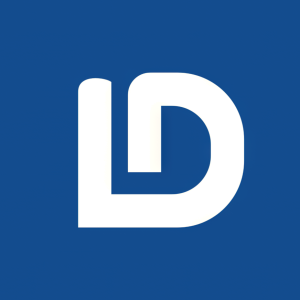Lucid Diagnostics Presents Real-World EsoCheck Data at the American Association for Cancer Research
Lucid Diagnostics Inc. (Nasdaq: LUCD) announced promising results from a presentation at the AACR Special Conference showcasing the EsoCheck esophageal cell sampling procedure. Conducted on 687 patients, it achieved a 98% success rate, even with severe gag reflex cases. The average procedure took 3.5 minutes, and over 90% of samples yielded sufficient DNA for testing. EsoCheck and its companion EsoGuard test are pivotal for early detection of esophageal precancer, with recommendations from major guidelines, addressing the high mortality associated with esophageal cancer.
- EsoCheck procedure achieved a 98% success rate across 687 patients.
- Rapid procedure time averaging only 3.5 minutes enhances patient accessibility.
- Over 90% of samples had sufficient DNA for EsoGuard testing, indicating reliability.
- EsoCheck is endorsed as the only nonendoscopic device for esophageal cancer screening.
- None.
EsoCheck esophageal cell sampling procedure performed on 687 patients with
The presentation, entitled Rapid, Noninvasive, Office-based, Esophageal Cell Collection for Early Detection of Esophageal Precancer and Cancer, reported data on 687 patients who underwent EsoCheck esophageal cell sampling by a trained nurse practitioner, in a rapid office procedure without sedation or anesthesia. The samples were then sent to a central laboratory for DNA extraction, quantification, and molecular biomarker testing using Lucid’s EsoGuard® Esophageal DNA Test (“EsoGuard”).
“EsoCheck remains the only commercially-available, nonendoscopic esophageal cell collection device recommended by major professional society guidelines for early detection of esophageal precancer to prevent esophageal cancer deaths,” said
About EsoGuard and EsoCheck
Millions of patients with GERD are at risk of developing esophageal precancer and a highly lethal form of esophageal cancer (“EAC”). Over
Esophageal precancer screening is already recommended by clinical practice guidelines in millions of GERD patients with multiple risk factors, including age over 50 years, male gender, White race, obesity, smoking history, and a family history of esophageal precancer or cancer. Unfortunately, fewer than
The only missing element for a viable esophageal cancer prevention program has been the lack of a widespread screening tool that can detect esophageal precancer. Lucid believes EsoGuard, performed on samples collected with EsoCheck, is the missing element – the first and only commercially available test capable of serving as a widespread screening tool to prevent esophageal cancer deaths through the early detection of esophageal precancer in at-risk GERD patients. An updated
EsoGuard is a bisulfite-converted NGS DNA assay performed on surface esophageal cells collected with EsoCheck, which quantifies methylation at 31 sites on two genes, Vimentin (VIM) and Cyclin A1 (CCNA1). The assay was evaluated in a 408-patient, multicenter, case-control study published in Science Translational Medicine and showed greater than
EsoCheck is an FDA 510(k) and CE Mark cleared noninvasive swallowable balloon capsule catheter device capable of sampling surface esophageal cells in, on average, a less than five-minute office procedure. It consists of a vitamin pill-sized rigid plastic capsule tethered to a thin silicone catheter from which a soft silicone balloon with textured ridges emerges to gently swab surface esophageal cells. When vacuum suction is applied, the balloon and sampled cells are pulled into the capsule, protecting them from contamination and dilution by cells outside of the targeted region during device withdrawal. Lucid believes this proprietary Collect+Protect™ technology makes EsoCheck the only noninvasive esophageal cell collection device capable of such anatomically targeted and protected sampling. The sample is sent by overnight express mail to Lucid’s CLIA-certified, CAP-accredited laboratory,
About
Forward-Looking Statements
This press release includes forward-looking statements. Forward-looking statements are any statements that are not historical facts. Such forward-looking statements, which are based upon the current beliefs and expectations of Lucid’s management, are subject to risks and uncertainties, which could cause actual results to differ from the forward-looking statements. Risks and uncertainties that may cause such differences include, among other things, volatility in the price of Lucid’s common stock; general economic and market conditions; the uncertainties inherent in research and development, including the cost and time required to advance Lucid’s products to regulatory submission; whether regulatory authorities will be satisfied with the design of and results from Lucid’s clinical and preclinical studies; whether and when Lucid’s products are cleared by regulatory authorities; market acceptance of Lucid’s products once cleared and commercialized; Lucid’s ability to raise additional funding as needed; and other competitive developments. In addition, Lucid has been monitoring the COVID-19 pandemic and the pandemic’s impact on Lucid’s businesses. Lucid expects the significance of the COVID-19 pandemic, including the extent of its effect on its financial and operational results, to be dictated by, among other things, the success of efforts to contain the pandemic and the impact of such efforts on Lucid’s businesses. These factors are difficult or impossible to predict accurately and many of them are beyond Lucid’s control. In addition, new risks and uncertainties may arise from time to time and are difficult to predict. For a further list and description of these and other important risks and uncertainties that may affect Lucid’s future operations, see Part I, Item 1A, “Risk Factors,” in Lucid’s most recent Annual Report on Form 10-K filed with the
View source version on businesswire.com: https://www.businesswire.com/news/home/20221201005633/en/
Investors and Media
AKM@PAVmed.com
Source:







